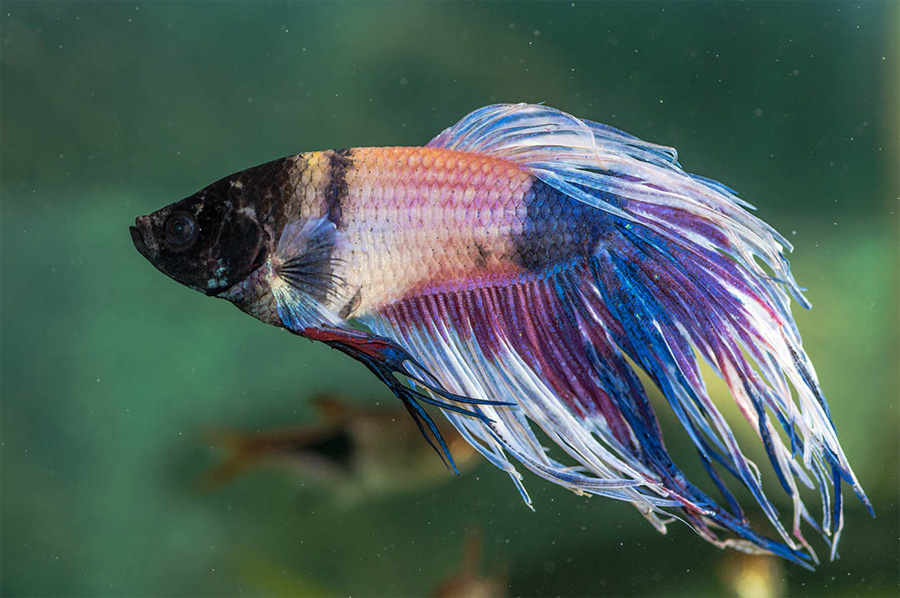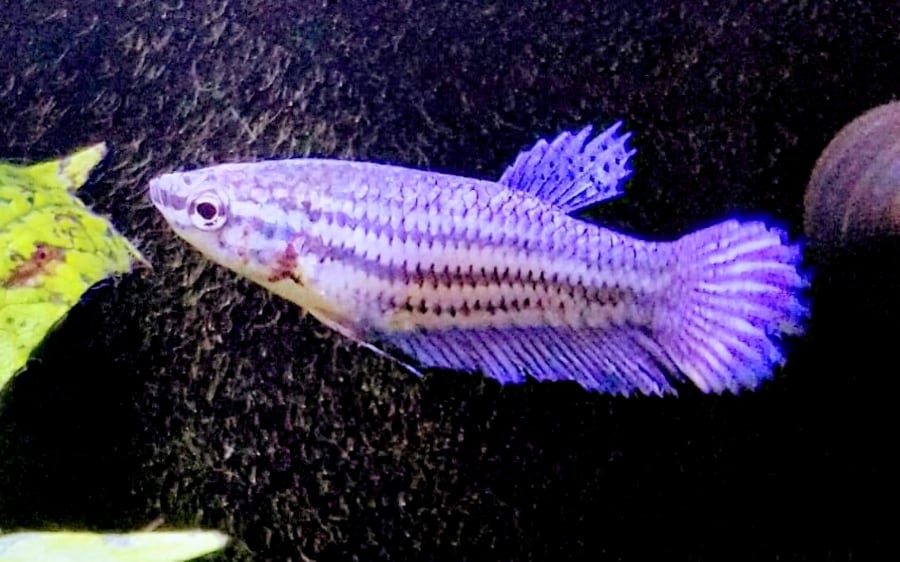Bettas are adorable with their striking colors. Adding some new bettas to your fish tank can be a great idea to add more colors—at least that’s what you think. Having new bettas can be stressful for you and the fish so you end up finding betta stress stripes or also known as fear stripes on their body.
These colorations can be easily noticed by seasoned betta enthusiasts, but new betta owners may need to put in the extra effort. Knowing that something has changed on your bettas is important so you can take the right action immediately.
What’s actually stress stripes on bettas? Stress stripes are colorations that develop horizontally on the body of betta fish. A stressful environment is the main cause of stress stripes, although some other factors may contribute to developing the stripes.
Stress stripes or stress stripes are typically darker or lighter than the normal color of your bettas. These stripes, however, are often confused with breed stripes that develop vertically. When your female bettas have these stripes, this means they are ready to breed.
Whenever you notice stress stripes have developed on betta’s body, it’s important to identify the causes. Knowing the triggering factors helps you solve the issue and bring your betta back to its healthy condition.
What Causes Stress Stripes on Bettas

A stressful environment is considered the major cause of stress stripes on bettas. However, short-term factors like sudden temperature change or water change are less likely to develop stress stripes. Instead, these stripes are commonly developed by long-term exposure to the stressful stimulus.
Here’s a list of potential factors that cause stress stripes on betta fish:
New Tank
It’s not uncommon for bettas to develop stress stripes after they are transferred to a new tank. Being in a new environment (tank) is stressful for bettas, so stress stripes begin to develop. But there’s nothing to worry about.
As long as the tank provides a healthy environment, male or female betta stress stripes should disappear as your betta gets used to it. This process commonly takes a couple of weeks. Just make sure you change the water, test the ammonia level, and heat as it should.
Small Tank
Despite their small size, bettas hate being in a small tank. When you decide to have bettas, you should prepare at least a 5-gallon tank. This size is considered enough for them to move around, not to mention it doesn’t get dirty quickly—a dirty environment stresses your betta out.
If you currently have a small tank and you notice stress stripes on bettas, tank size may be the reason. Get a bigger one and wait for a couple of weeks before checking if the stripes persist. If they stay, there may another reason.
Overcrowding
Just as with small tanks, overcrowding can develop stress stripes. Bettas are naturally solitary fish, which means they don’t like having some companies. Some fish is so active that they may stress out your bettas.
Poor Water Quality
Sudden changes in water quality or poor water quality will quickly stress out your bettas. If the condition continues, bettas will develop stress stripes and it may also cause other problems like ammonia poisoning.
Change of Scenery
Believe it or not, a change in surroundings will make your bettas stressed out. It gets even worse if you make changes in their territories. If you plan on scenery change, do it slowly so it doesn’t cause any fear on the bettas. Allow your bettas to get used to it instead of making major changes.
Whenever the changes are made, continue to monitor the reaction of your betta fish. If stripes appear, they should disappear when your fish gets used to the new surroundings.
Stress Stripes on Male Bettas
Female bettas are more likely to get stressed than male betta fish, but it doesn’t mean male bettas won’t develop stress stripes. However, male betta stress stripes are less apparent than females—they will more likely lose color than developing stress stripes.
Besides, stressed male bettas tend to display other signs of stress such as discoloration and change in behavior. If this happens, you may need to check the condition of the tank and the potential factors that trigger stress.
You should bear in mind that bettas can die from stress. It is especially true if you don’t notice the stripes so you don’t take any actions to treat the stress. A stressed betta fish is more vulnerable to infection and diseases, not to mention they are more likely to lose appetite and become lethargic.
How to Treat Betta Stress Stripes

As soon as you notice stress stripes on your bettas, it is important to take immediate action so the condition doesn’t get worse. How to get rid of stress stripes on betta is quite simple as long as you know what the cause is.
Here’s how you can overcome stress on bettas so their stress stripes disappear.
Identify the Cause
First and foremost, identifying the cause of stress can help you solve the issue. You can start with checking water parameters to find out if ammonia is present. High levels of ammonia, nitrite, or nitrate can cause stress on bettas.
You may also need to check on pH level and also tank temperature. If the pH level is outside betta’s desired range or if the temperature keeps shifting, this condition can lead to stress on your betta fish.
Provide Enriching Environment
If you’ve checked the triggering factors, continue to provide an enriching environment that provides live plants, shelter, and entertainment. These should help eliminate the stress of your bettas, so the stress stripes will disappear soon.
Putting some live plants into your fish tank gives small changes to the environment but bettas love it. Thus, you can expect healthier and happier betta fish.
Remove Aggressive Fish
Another treatment to stress stripes on betta is to remove aggressive fish. If you’ve just added new fish into the tank and your betta fish starts to develop stress stripes, it’s easy to tell that the new fish is the triggering factor.
The only way to solve this problem is to remove any aggressive fish from the tank. Bettas are natural fighters but despite their ability to fight back, they are going to be stressed out. This will lead to stress stripes eventually.
Give Enough Space
Your betta needs 5-gallon fish tank at a minimum. This size gives enough space for bettas to swim around so they can be stress-free. Some people might believe that bettas can survive in a small aquarium but they hate it. If you want to pet a happy beta, you should find at least a 5-gallon tank.
Add Hiding Spots
Hiding places not only provide additional decoration but it also helps eliminate stress on your betta fish. Whenever needed, your betta fish can hide in their safe place and relax. It is also a place where they can rest without fear.
Some live plants work well to be a hiding spot for bettas but you can also opt for caves. There are so many options when it comes to hiding places, just pick one that meets your preferences.
Conclusion
Betta stress stripes are quite common, especially among newly bought bettas. Several factors lead to this condition, including environment and water quality. If you notice these stripes, take quick action to solve the issue.



